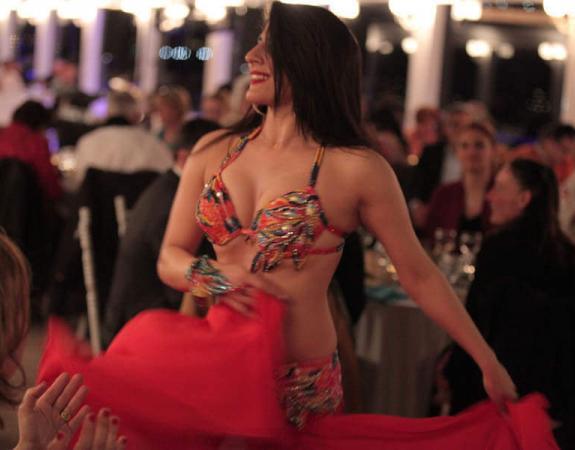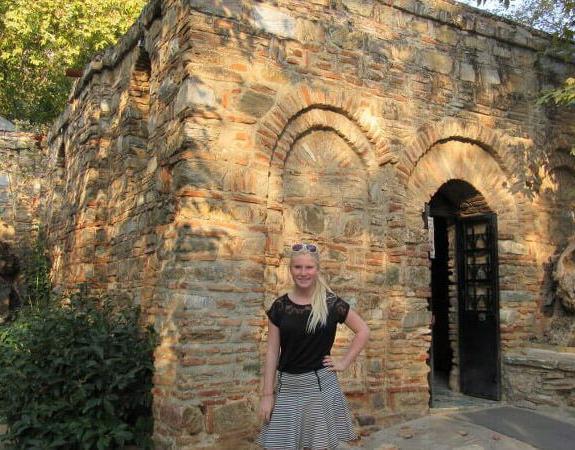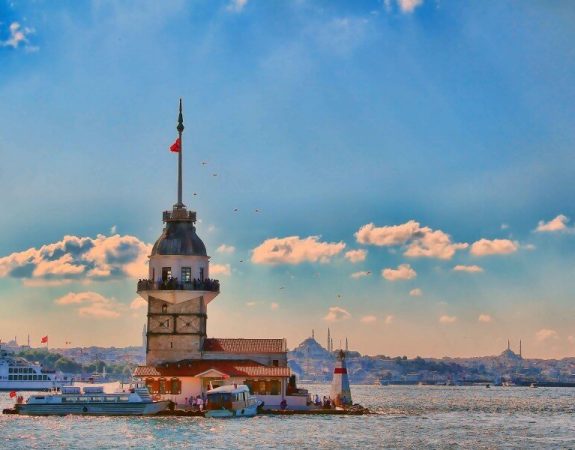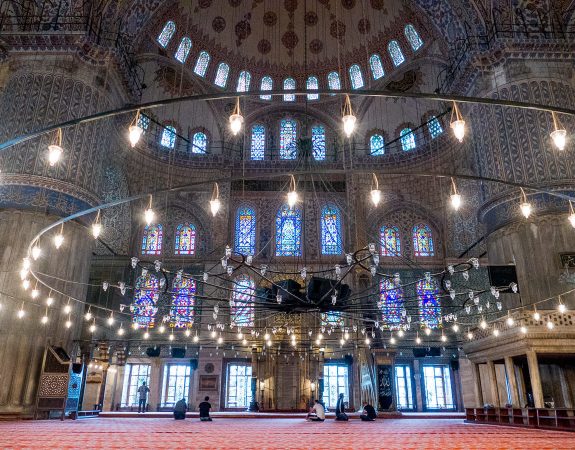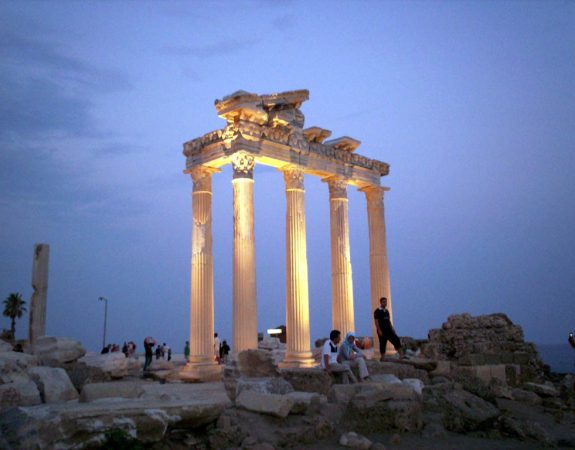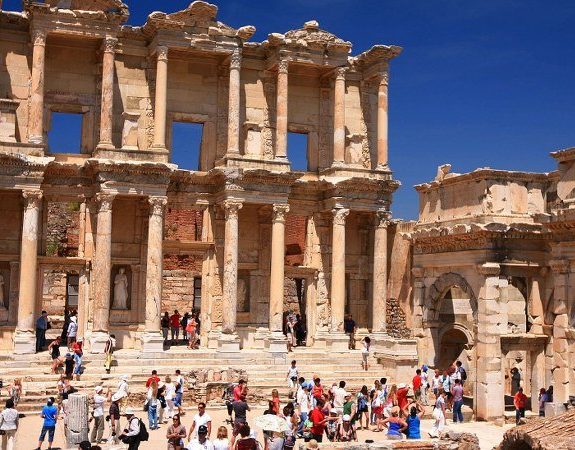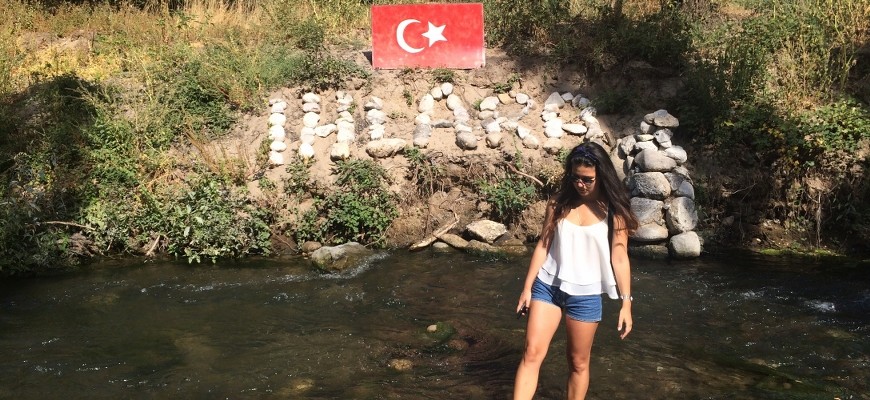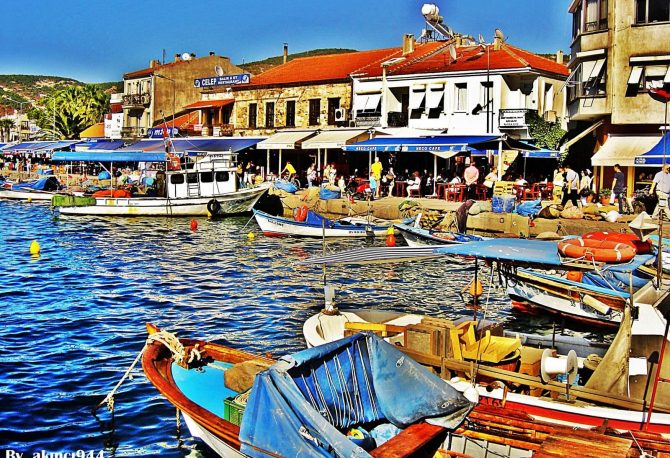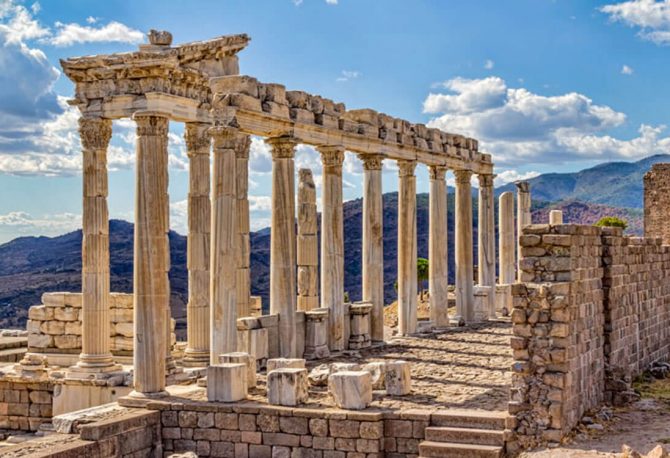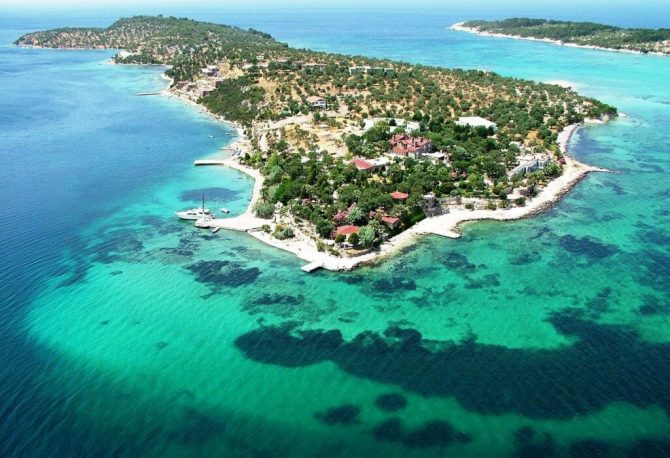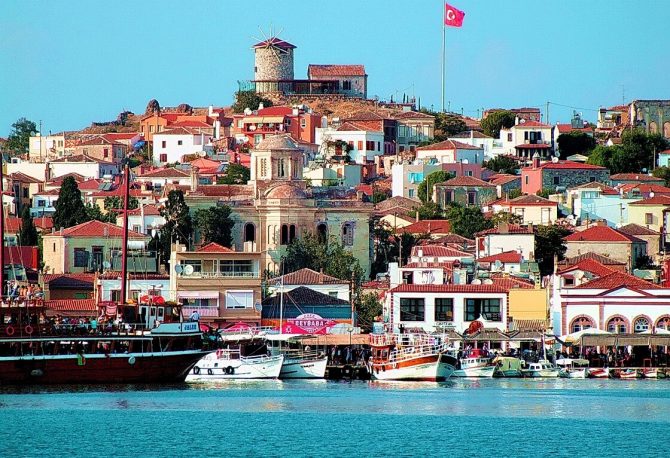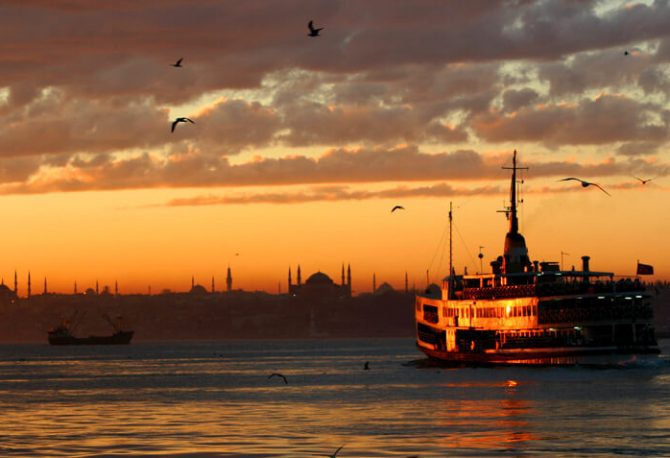Small, quiet, and attractive, Foca is the North Aegean’s other summer resort, rivaling Kuşadasi and Ayvalık as the non-Bodrum summer escape. With its large fishing fleet and clear, blue waters, the more-refined Foca offers a welcome variation on Aegean resort towns. Its strategic location near the gulf of Izmir has made the town both a popular resort and a large military center. The navy controls the land south and the jandarma training school hugs most of the land on the interior.
In antiquity, Phokaia, as it was called, was a major trading and seafaring center. Herodotus reports that Phokaian shipbuilders built 50-oared galleys capable of ferrying 500 people across the Mediterranean and Black Seas. On trips like these, they founded both the French city of Marseilles and Samsun, on the Black Sea coast. Recent archaeological excavations have revealed segments of the massive walls Herodotus described. Though Foca has declined in importance, it remains true to its ancient character in at least one respect: in ancient Greek, “phokia” means “seal.” The town still has a close relationship with its small population of endangered Monk Seals, who have earned Foca’s landscape of scree-covered hills and rocky coastline official protection from development. They have become the town’s mascot, their black eyes keeping watch from posters, pamphlets, and T- shirts. Some scholars say that the legend of the Sirens, the tantalizing sea nymphs whose songs lured sailors to their deaths, derives from the barking of Foca’s seals.
The physical layout of Bergama, formerly ancient Pergamon, seems to reflect the ebb and flow of the city’s prosperity over time. A dazzling center of cultural activity in antiquity, Pergamon became the capital of the Roman province of Asia and had one of the two largest libraries in the ancient world. The ruins of this great Hellenistic and Roman city dominate the top of the hill. Buildings from later eras, when the city’s stature and importance declined, cling lower down at the hill’s feet. Greek houses, remnants of more prosperous days during the late-19th century, cluster around the tiny hills of the river banks before giving way to the cement buildings of modern Bergama. Unfortunately, in spite of having some of the most extensive and important ruins in Asia Minor, Bergama is often over looked. This quiet, attractive town suffers from severe economic depression, mostly due to its location off the main coastal highway and away from the sea, but its calm, unassuming quality, absent in many seaside towns, makes it worth a visit.
Pergamon traces its roots back to the Aeolian Greeks, who built a settlement here in the 9th century. Like many other ancient cities, Pergamon blossomed from the spoils of Alexander the Great’s conquest of the Persian empire. Alexander’s successor in the region, Lysimachus, deposited a hefty booty in the city under the care of Philetaerus, who rose from treasurer to ruler when Lysimachus did not return from battle. Philetaerus ruled fairly and generously, maintaining good rela¬tions with neighboring cities, and beautified Pergamon with temples and other new buildings. When he chose his nephew Eumenes I to succeed him in 263 BC, he established a royal dynasty that would last for five generations. This dynasty expanded Pergamon’s empire into Central Anatolia as far as Konya. By the 2nd century BC Pergamon had gotten itself into bed with the increasingly powerful Romans, and in 133 BC King Attalus II bequeathed the city to the Roman Empire. Under the Romans, Pergamon became the prosperous capital of the province of Asia. An earthquake in the 2nd century brought the city into a period of irreversible decline, however, and over the next several centuries it passed through the hands of the Byzantines, Crusaders, Lascarids, Arabs, Ottomans, and Greeks.
Dikili doubles as a fishing town and a beach escape for Turks from İzmir and İstanbul, as well as for foreigners whose luxury liners dock at the local port. While its population increases tenfold in summer, the town still manages to retain a comfortable, homey feel. During the day, vacationers catch rays on the beaches, leaving the streets eerily deserted, only to emerge at night from under their beach umbrellas to stroll along the harbor. It’s almost worth an overnight stay just to see the town’s main pedestrian boulevard come alive with people of all ages enjoying the pleasant sea breeze.
Ayvalik’s decaying old-world charm and host of exceptional accommodations make it an attractive destination from which to explore the surrounding beaches, olive groves, and small islands. Known for its ornate Neoclassical buildings, Ayvalik was a wealthy Greek settlement until the 1923 population exchange. Hidden away in a maze of narrow cobblestone streets are pastel houses, markets, shops, and people whose traditional lifestyle disappeared in most of Turkey decades ago. Ayvalik’s streets are not as clean as those of other Aegean resort towns, and many of its buildings are uninhabited ruins with histories of their own. But when the daily grind of the city becomes too much, the sandy beaches of Sarımsaklı, the serene beauty of Alibey Island, and the stunning views from Şeytan Sofrasi offer refreshing escapes.
I ruddling two continents and almost three millennia of history, Istanbul exists on an incomprehensible scale. The city occupies a densely historic landscape of Ottoman Mosques, Byzantine mosaics, and Roman masonry. The Bosphorus Straits have proven to be the city’s lifeline and its curse: the strategic location between two seas and two continents gave birth to the city, but also attracted countless sieges from covetous neighbors. Having withstood innumerable demographic Lilts, devastating wars, natural disasters, and foreign occupations, Istanbul is naturally composed of a unique mix of civilizations, a melange evident not only in architecture and religious practice but also in everyday life. Conservative women wearing black veils mingle in the swelling crowds with younger women in Western dress, and major religious and historical sights double as the stunningly beautiful backdrops for love scenes in Turkish pop videos.
The original name of the channel comes from an Anglicization of the Ancient Greek Βόσπορος (Bosporos), which was folk-etymologized. In its current incarnation, Istanbul is the most crowded and cosmopolitan city in the Turkish Republic. This urban supernova explodes out into the surrounding countryside behind an ever-expanding front of new construction sites, but as no crane or cement truck could possibly hope to keep up with the pace of Istanbulian life, the city remains crowded. New immigrants from the Anatolian hinterland live in shanties on the fringes of the city. These dwellings, called gecekondus because they are hastily erected, as if in a single night (gece), were some of the first structures to be leveled in the devastating earthquake of August 1999.
The poverty of Istanbul’s gecekondus coexists with an ambitious commercialism as audacious and ostentatious as any to be found in New York or London. Yet every level of the city’s burgeoning economy remains distinctly Istanbulian: posh, modem nightclubs lend their space to raucous traditional weddings, and modem fast food competes for neck-and-neck with boatmen selling fried fish sandwiches.
Even as Istanbul’s centuries-long sprawl has engulfed entire towns, each neighborhood of the city retains a distinct character. Some sections of the city are easily accessible to the visitor. The challenge is to see beyond the Ottoman palaces, carpet salesmen, and backpacker bars, and venture out into neighborhood produce markets, back-alley tea shops, and Byzantine fortifications.


